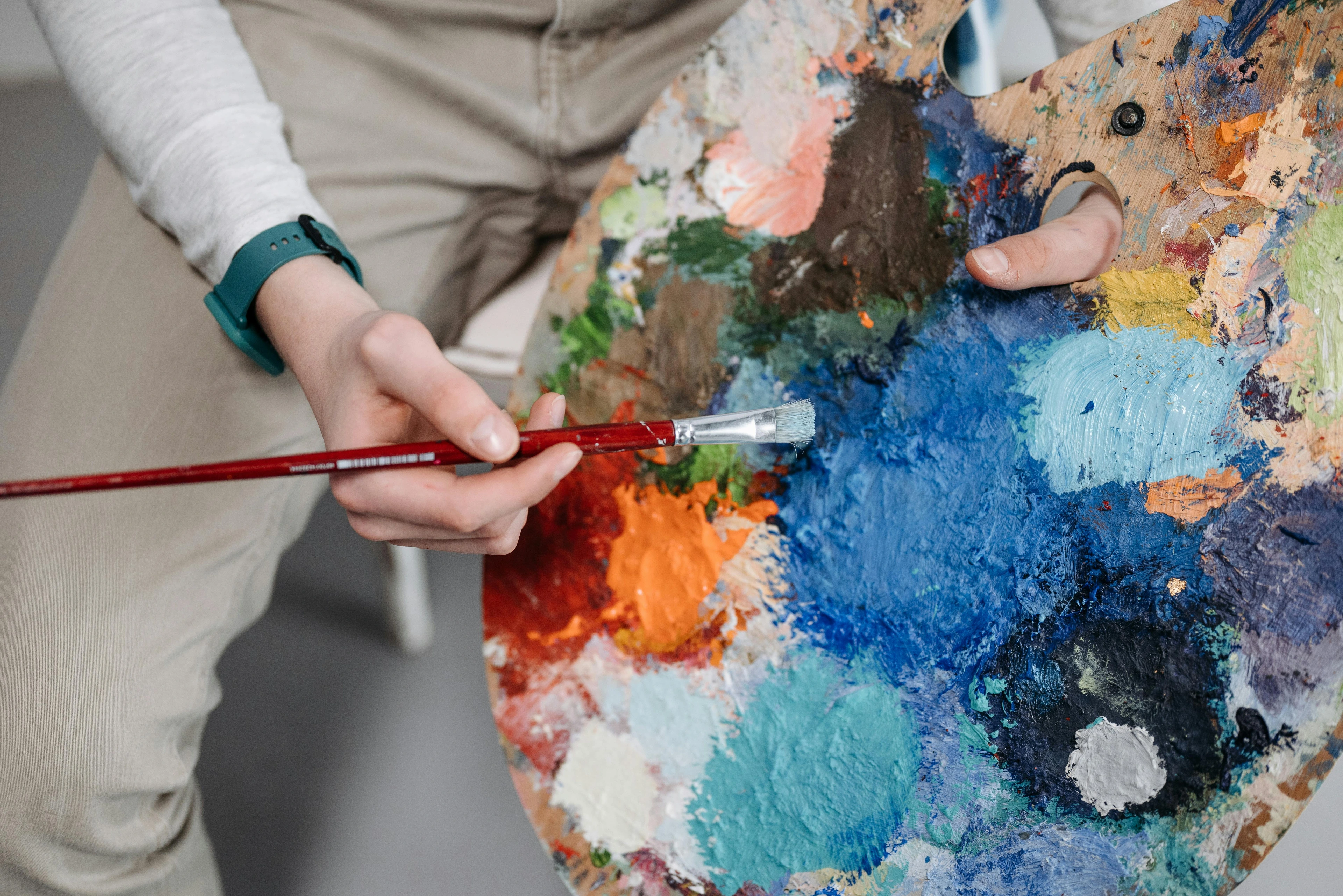
Who Are the Most Famous Visual Artists Today? An Artist's Guide
Dive into the world of contemporary art with a personal touch. Discover famous visual artists like Yayoi Kusama, David Hockney, Ai Weiwei, and Banksy, explore iconic artworks, understand what makes them famous today (market, museums, social media, biennials!), and get tips on exploring the scene, all from an artist's perspective. Includes specific artwork examples, insights into the market, global perspectives, the role of curators, and thoughts on the future of fame and digital art.
Who Are the Most Famous Visual Artists Today? Your Ultimate (and Engaging) Guide
Okay, let's talk about contemporary art. It’s a vast, sometimes confusing, often exhilarating world. Trying to pinpoint the "most famous" visual artists working today feels a bit like trying to catch smoke – the scene shifts constantly, fame is subjective, and let's be honest, who has the time to keep up with everything? I remember walking into a major museum's contemporary wing for the first time, feeling completely overwhelmed by the sheer scale and variety, wondering if I'd ever 'get' it. It left me feeling completely adrift in the sheer scale and complexity of it all, like trying to find your car keys in a room you just tidied. There was this one time I spent an hour trying to understand a piece that turned out to be... well, let's just say it wasn't what I thought. It's a weird feeling, knowing less now than you did yesterday. And the sheer volume of work being made, across painting, sculpture, installation, performance, and even digital realms? It's mind-boggling, in the best possible way.
But engaging with the art of our time is important. It reflects our world, challenges our perspectives, and sometimes, it's just incredibly cool to look at. Unlike studying the Old Masters, contemporary artists are living, breathing, creating right now. You might see their work in a top gallery, stumble upon it online, or even find a piece you love available to buy. They are part of our cultural conversation.
This guide aims to be your starting point – a comprehensive yet approachable look at some of the most famous visual artists shaping the art world today. We'll explore who they are, what makes their work stand out, and why they've captured the global imagination. Think of it as navigating the contemporary art landscape with a slightly bewildered but enthusiastic artist friend.
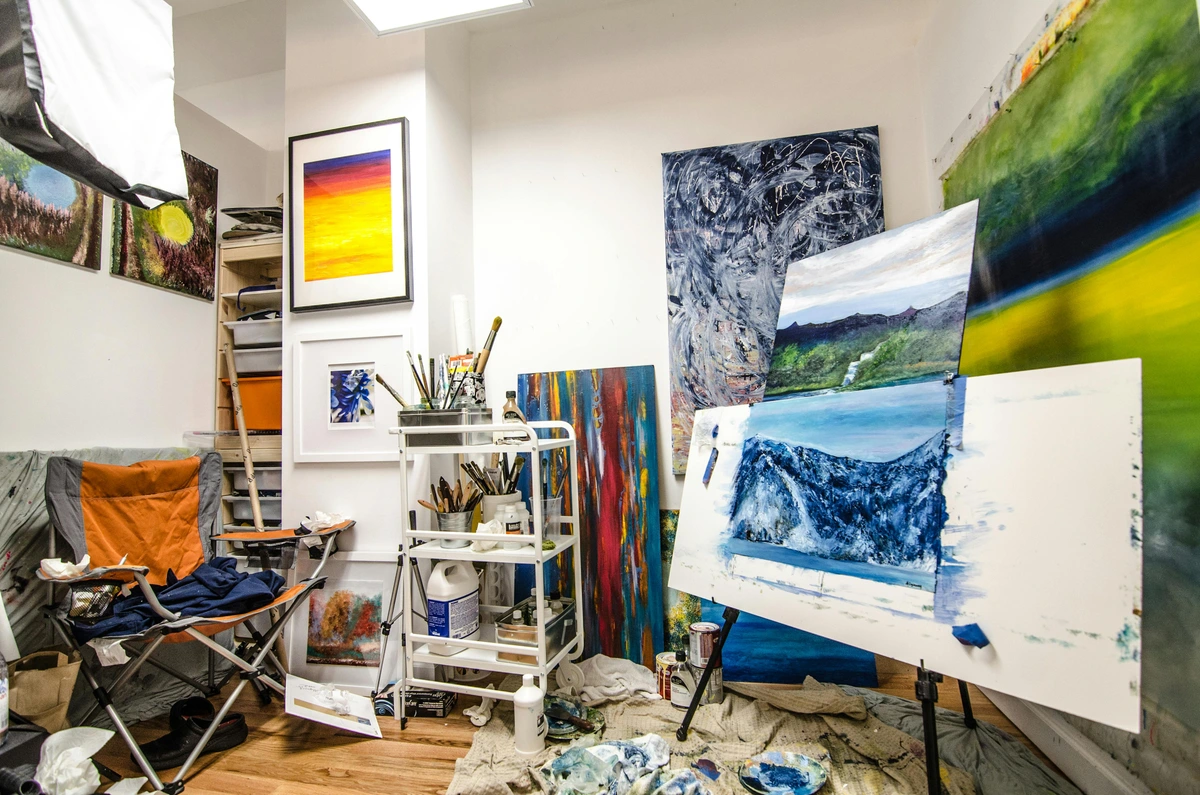
What Does "Famous Visual Artist Today" Even Mean?
Before we dive into names, what constitutes "famous" in today's art world? It's not just about selling paintings for millions (though that certainly helps get you noticed). It's a complex recipe, a blend of various factors that create a kind of global visibility and influence. Here are a few key ingredients:
- Market Value: High auction prices and gallery sales are undeniable indicators of fame and demand. Think artists like Damien Hirst or Jeff Koons. Understanding art prices is a whole topic in itself, and frankly, sometimes feels a bit mad – how can a shark in formaldehyde be worth that much? I mean, I love a good concept, but my paint tubes cost way less.
- Institutional Recognition: Major museum exhibitions, acquisitions by prestigious collections (like MoMA, Tate Modern, Centre Pompidou), and awards like the Turner Prize confer significant status. Being featured in the best museums for modern art is a big deal. Curators act as gatekeepers and interpreters, selecting artists for major exhibitions and shaping the discourse around their work. Acquisition by a major museum collection is a huge stamp of approval. It's like getting a gold star from the art history teachers.
- Media Presence & Pop Culture Penetration: Are they featured in magazines, documentaries, or even mainstream news? Have they crossed over into popular culture? Think Yayoi Kusama's Infinity Rooms becoming Instagram sensations.
- Digital Presence & Direct Connection: In the digital age, an artist's ability to connect directly with a global audience and create work that resonates online is increasingly powerful. Beyond just work going viral, many artists actively use platforms like Instagram, TikTok, or even create work specifically for digital spaces (hello, NFTs!). Building a direct connection with a global audience is a new path to visibility, sometimes bypassing traditional gatekeepers entirely. It's fascinating to see artists build communities online, sharing their process or just chatting with fans – it feels like a whole new kind of studio visit, albeit a virtual one. It definitely changes the game from the days when you had to get a gallery to see the light of day.
- Influence on Other Artists: Are they pushing boundaries and inspiring the next generation? Artists like Gerhard Richter or Cindy Sherman have profoundly impacted subsequent artists.
- Critical Acclaim: While critical opinion and market value don't always align, sustained positive reception from critics and curators matters. It helps shape the narrative around an artist's importance. (Art critics still have a role, believe it or not). Sometimes I wonder what they'd say about my latest messy canvas... probably something about 'visceral engagement with pigment,' which sounds way better than 'I spilled paint.'
- Cultural Impact Beyond the Art World: This goes beyond just being in the news. Does their work influence fashion, music, design, or even broader social conversations? Artists whose imagery or ideas permeate popular culture in unexpected ways often achieve a different kind of fame. Think KAWS, whose 'Companion' figures started in street art but are now collectible toys, fashion collaborations, and massive sculptures, blurring lines between fine art, design, and commerce. Or Shepard Fairey's 'Hope' poster for Obama, which became an instant, globally recognized political icon.
- Major International Exhibitions: Platforms like the Venice Biennale, Documenta, or various biennials and triennials around the world are crucial for artists to gain global exposure, critical attention, and institutional validation. Being selected for these shows is a significant marker of international relevance and contributes heavily to an artist's global profile.
- Longevity & Consistency: Many famous artists today have built their reputations over decades, consistently producing compelling work. Checking out an artist's journey, maybe even a timeline, can be revealing.
It's a mix of these factors, and sometimes, it just feels like an artist is everywhere. It’s subjective, sure, but some names undeniably rise to the top. It's also worth noting the difference between artists who have built decades-long careers with sustained institutional support and market value (like Richter or Hockney) versus those who have achieved rapid, sometimes viral, fame more recently. Both are 'famous today,' but the nature and longevity of that fame can differ. Fame in the art world can be as ephemeral as a performance piece or as enduring as a bronze sculpture – it's part of the wild ride.
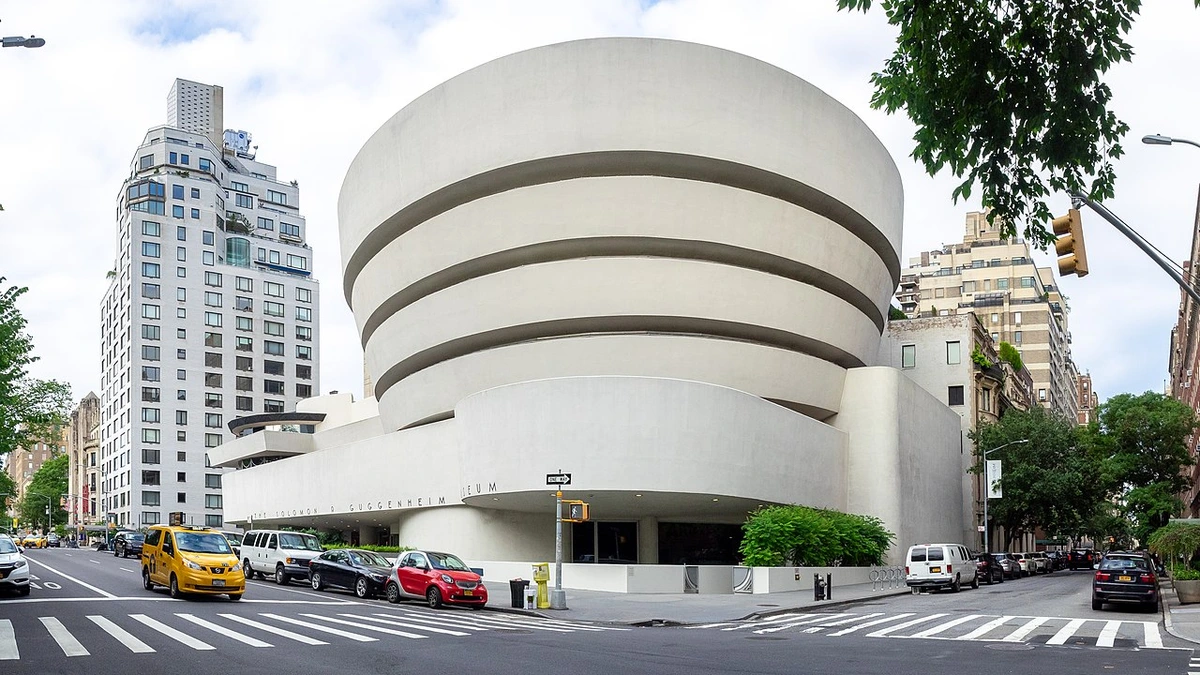
Spotlight: Key Famous Visual Artists Shaping Today's Scene
Compiling a definitive list is impossible – someone brilliant will always be left out. This list focuses on artists with significant global market presence, institutional recognition, and media visibility. But remember, fame is just one measure! Here are eight undeniably famous and influential figures you should know, representing a range of styles and mediums. Let's dive in...
Yayoi Kusama (b. 1929) - The Polka Dot Phenomenon
Who: The "Princess of Polka Dots." A Japanese artist whose career spans painting, sculpture, installation, and performance art.
Why Famous: Kusama is instantly recognizable for her obsessive use of polka dots, nets (like in her Infinity Nets series), and her immersive Infinity Mirror Rooms. Her Infinity Mirror Rooms, like Phalli's Field or All the Eternal Love I Have for the Pumpkins, create immersive, disorienting experiences that have become global sensations, drawing massive queues and dominating social media feeds – you've probably seen a selfie from one! Her work is avant-garde, incorporating elements of Minimalism (art characterized by simplicity and often geometric shapes, focusing on the object itself) and Pop Art (art based on popular culture and mass media, often bold and bright), and is deeply personal, exploring themes of infinity, self-obliteration, and psychological depth. She’s a testament to singular vision and persistence, and honestly, her ability to create such joy and wonder from her own struggles is incredibly inspiring to me. Being inside one of her Infinity Mirror Rooms feels like stepping into another dimension, a truly unique sensory experience. Another notable work is her large-scale outdoor sculpture Narcissus Garden, which consists of hundreds or thousands of mirrored spheres, reflecting the environment and the viewer, playing with ideas of ego and infinity in a different way than the enclosed rooms.
Moving from Kusama's vibrant, immersive worlds, we encounter an artist known for capturing light and landscape with a distinctly modern eye...
David Hockney (b. 1937) - Britain's Beloved Modern Master
Who: One of Britain's most beloved and influential artists. A key figure in the Pop Art movement of the 1960s, Hockney continues to experiment across painting, drawing, printmaking, photography, and even digital art on iPads.
Why Famous: Known for his vibrant depictions of swimming pools, Californian landscapes, and intimate portraits, Hockney's work is characterized by its bright palette, exploration of perspective, and sheer joy in looking. His iconic paintings of Californian swimming pools, like A Bigger Splash or Portrait of an Artist (Pool with Two Figures), capture a specific light and lifestyle, becoming symbols of a certain era and place. He constantly adapts to new technologies while maintaining his distinctive figurative and landscape painting style. He’s a modern master who makes looking feel fresh, and I just love how he embraces new tools like the iPad – it makes me feel less guilty about doodling on mine! His willingness to keep trying new things, even in his 80s, is something I really admire; it reminds me that being an artist is a lifelong process of learning and adapting. Beyond the pools, his large-scale multi-canvas landscapes, like Bigger Trees Near Warter, created after returning to England, show a different facet of his engagement with place and scale, often painted outdoors and assembled like a giant puzzle.
From Hockney's embrace of technology and light, we turn to a German master who grapples with history and the very nature of images...
Gerhard Richter (b. 1932) - The Master of Doubt and Abstraction
Who: A German visual artist whose work defies easy categorization, exploring photorealistic painting, abstract art, photography, and glass installations throughout his long career.
Why Famous: Richter is revered for his technical mastery and his profound, often unsettling, engagement with history, memory, and the nature of images. His "blur" paintings, like the haunting portrait Betty, based on photographs, question the nature of representation and memory. His large-scale abstract works, created with a squeegee, such as Abstract Painting (594), are monumental explorations of color, texture, and process. He constantly questions the act of painting itself, making him one of the most intellectually respected artists alive. His abstract works, in particular, challenge me to think about what painting can be, pushing beyond representation in a way that feels both chaotic and controlled. Trying to understand the layers and process in a Richter abstract can feel like trying to decipher a beautiful, complex code – it's a visual puzzle that rewards deep looking. Another significant body of work is his Colour Charts series, which began in the 1960s, directly referencing commercial paint color charts and exploring ideas of objectivity, chance, and the systematic application of color, a stark contrast to his expressive abstracts.
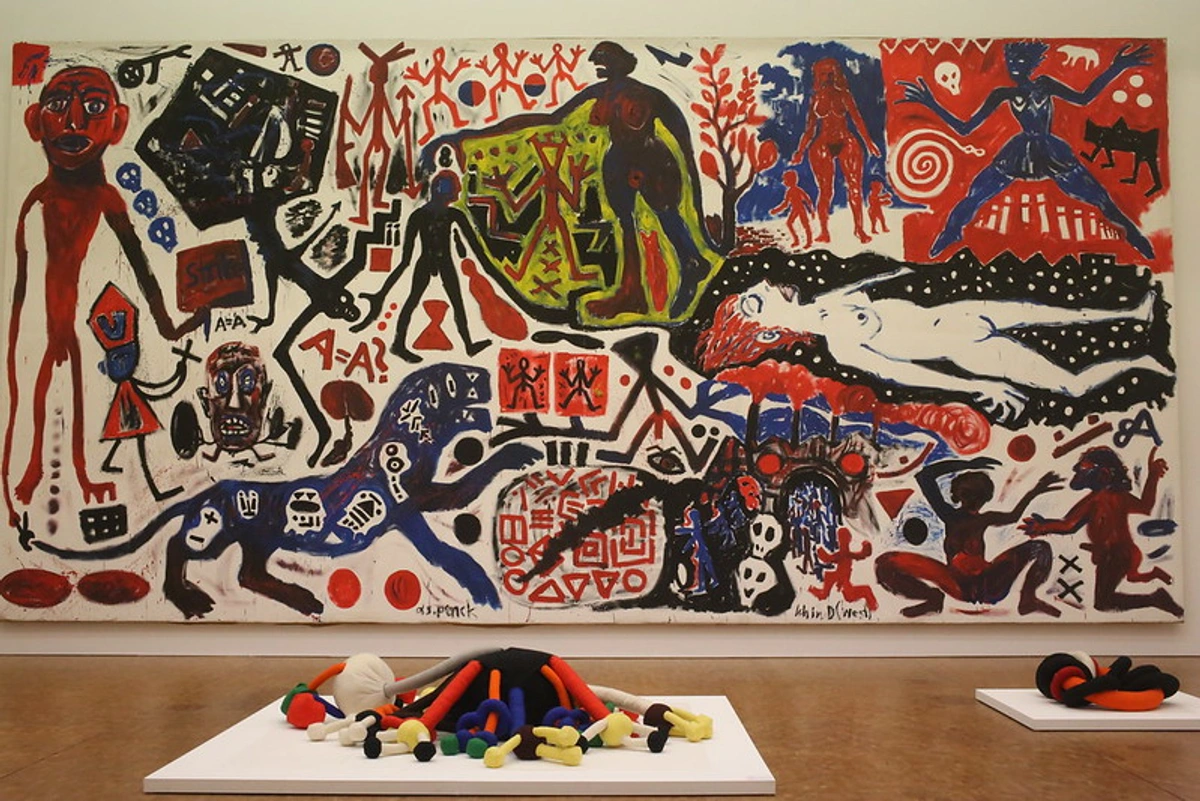
(This image shows work by A.R. Penck, another influential German artist, illustrating the power of large-scale contemporary painting often seen in museum settings where Richter's work is also prominent.)
Moving from Richter's intellectual rigor, we encounter an artist who turns the lens inward, but with a critical eye on external forces...
Cindy Sherman (b. 1954) - The Shape-Shifting Critic
Who: An American photographer and filmmaker known for her conceptual self-portraits.
Why Famous: Sherman photographs herself in a multitude of guises, exploring identity, gender stereotypes, representation, and the construction of imagery in contemporary culture. Her groundbreaking Untitled Film Stills series (1977-1980), where she posed as various female archetypes from imagined B-movies, is a cornerstone of postmodern (art that questions established conventions and grand narratives, often by referencing or re-using existing styles and images) photography, dissecting how women are portrayed in media. She is both the artist and the subject, using makeup, costumes, and settings to transform herself utterly, challenging our assumptions about portraiture and the female image. Her work is a cornerstone of postmodern and feminist art (art concerned with women's experiences and rights). I find her work fascinating because she uses herself as the canvas to critique society – it's a powerful, shape-shifting commentary that makes you question everything you see. It makes me think about all the different 'roles' we play every day, consciously or unconsciously. Another notable series is her History Portraits (1988-1990), where she parodied famous historical paintings, inserting herself into the roles of figures from Old Master works, further questioning authenticity, representation, and the canon of art history.
From the personal exploration of identity, we shift to an artist whose work is overtly political and globally focused...
Ai Weiwei (b. 1957) - The Artist-Activist
Who: A Chinese contemporary artist and activist whose work spans sculpture, installation, architecture, photography, and social media.
Why Famous: Ai Weiwei is renowned for his powerful, often politically charged work that critiques the Chinese government and addresses global issues like human rights, migration, and freedom of expression. His powerful installations, such as Sunflower Seeds (millions of handmade porcelain seeds covering the Tate Modern's Turbine Hall floor) or Straight (using rebar salvaged from the 2008 Sichuan earthquake to form a wave-like sculpture), are visually striking and carry profound political and social weight. He uses his art as a tool for social commentary and activism, making him one of the most visible and outspoken artists today. His bravery in using his platform to speak truth to power, often at great personal risk, is something I deeply admire. It makes me wonder how I would use my own art if faced with similar challenges – a humbling thought. A less monumental but equally poignant work is Remembering (2009), an installation on the facade of the Haus der Kunst in Munich made from thousands of children's backpacks, spelling out a quote from a student victim of the Sichuan earthquake, a direct and emotional memorial.
Next, we look at an artist who takes everyday objects and elevates them to monumental, often controversial, status...
Jeff Koons (b. 1955) - The King of Kitsch
Who: An American artist known for his sculptures depicting everyday objects, including balloon animals produced in stainless steel with mirror-finish surfaces.
Why Famous: Koons is a master of appropriation (think of it like sampling in music – taking something that already exists, like an image or object, and using it in your own work, often with minimal changes, to comment on the original or create new meaning) and kitsch, taking banal objects and elevating them to high art status through meticulous production and monumental scale. His Balloon Dog sculptures, particularly the orange one that sold for a record-breaking price, are instantly recognizable icons of contemporary art and the art market itself. Works like Rabbit (a stainless steel casting of an inflatable bunny) exemplify his use of kitsch and appropriation. His Neo-Pop (a movement building on Pop Art themes, often with a more ironic or conceptual edge) and Conceptual Art (where the idea behind the work is more important than the finished art object) often plays with themes of consumerism, celebrity, and desire. He's controversial – critics are divided, but his market power and public recognition are undeniable. He’s a successor, in some ways, to Pop artists like Warhol and appropriation artists like Richard Prince. His work is often bafflingly expensive, which just adds another layer to the whole "what is art?" conversation, doesn't it? It's a reminder that the art world can be... well, a bit weird. And sometimes, that weirdness is exactly what makes it interesting. Another example of his work is Puppy (1992), a massive sculpture of a West Highland White Terrier puppy covered in flowering plants, a public artwork that combines the cute and the monumental, often installed in prominent locations like outside the Guggenheim Bilbao.
From Koons' polished, often perplexing objects, we turn to an artist whose work is raw, public, and shrouded in mystery...
Banksy (Active since 1990s) - The Anonymous Provocateur
Who: An anonymous England-based street artist, political activist, and film director.
Why Famous: Banksy's satirical street art and subversive epigrams combine dark humour with graffiti executed in a distinctive stenciling technique. His works appear unexpectedly on publicly visible surfaces, often carrying powerful political or social messages. His anonymous identity and provocative stunts, like the self-shredding of his Girl with Balloon painting moments after it sold at auction, have made him a global phenomenon, blurring the lines between street art, performance, and market critique. His anonymity, stunts, and anti-establishment stance have made him a global cultural icon, blurring the lines between street art, performance, and high art. There's something thrilling about the ephemeral nature of his work and the way it pops up where you least expect it – it feels like a secret conversation happening in plain sight. It makes you look at walls differently, doesn't it? Like the city itself is whispering secrets. Beyond the stencils, his temporary installation Dismaland (2015), a dystopian theme park, was a large-scale, immersive critique of consumerism and society, showing his ability to work beyond the street and engage with complex social themes on a massive scale.
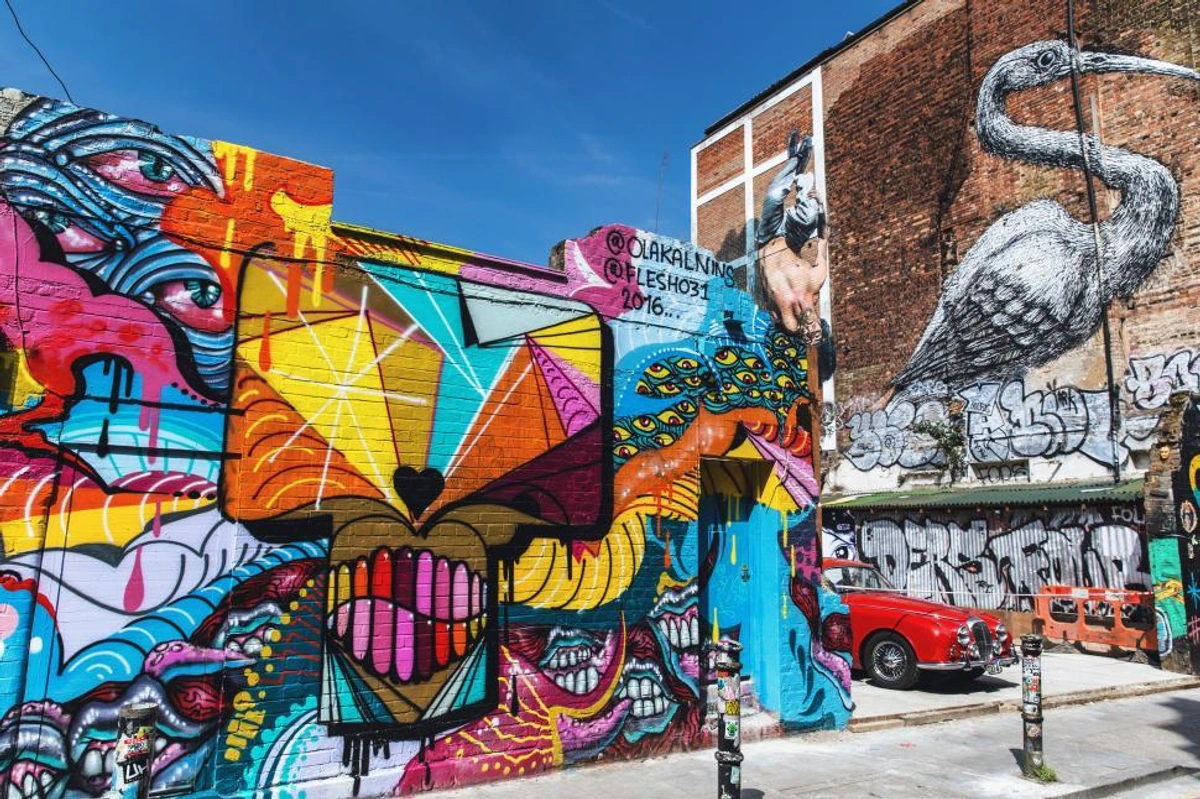
(Street art like this, found globally, owes a debt to pioneers like Banksy who brought it into the mainstream conversation.)
Finally, let's look at an artist whose fame transcends traditional Western centers, using everyday materials to create monumental works...
El Anatsui (b. 1944) - The Alchemist of Discarded Materials
Who: A Ghanaian sculptor known for his large-scale installations made from discarded bottle caps and copper wire.
Why Famous: El Anatsui has achieved global recognition for transforming waste materials into shimmering, textile-like hangings that drape and flow like fabric. Works like those in his Gravity and Grace series are monumental in scale and visually stunning, but they also carry profound conceptual weight, speaking to themes of consumption, history, and the transatlantic slave trade (the bottle caps often come from liquor bottles introduced by European traders). His ability to turn something discarded into something so beautiful and meaningful is truly remarkable. Seeing one of his large pieces, the way it drapes and catches the light, is just mesmerizing – it makes you think about the hidden stories in everyday objects and the complex history embedded in materials. Another powerful work is Paths to the Grave (2006), a wall sculpture made from cassava graters, referencing the tools used in processing cassava, a staple crop with complex historical ties to migration and labor, demonstrating his ability to imbue simple objects with layered meaning.
Other Notable Mentions: A Glimpse into More Contemporary Stars
So, we've covered some of the biggest names, but is that really it? Of course not! The contemporary art world is teeming with incredible talent, and focusing on just eight feels a bit like picking your favourite grain of sand on a beach. Here are just a few more hugely influential living artists you should definitely know, representing a vast array of practices and perspectives:
- Anselm Kiefer: His monumental paintings dealing with history and myth feel like walking through a ruined, sacred landscape, often incorporating heavy materials like lead, straw, and clay, like his massive, layered paintings incorporating lead and straw, often referencing German history. (Ultimate Guide to Anselm Kiefer)
- Marina Abramović: Her groundbreaking performance art is intense, challenging, and often leaves me feeling profoundly moved or deeply uncomfortable – in a good way. She's known for pushing the limits of her own physical and mental endurance, known for endurance pieces like The Artist is Present, where she sat silently opposite museum visitors. Performance art, as a significant contemporary medium, owes a lot to pioneers like Allan Kaprow and Joseph Beuys, who pushed the boundaries of what art could be long before Marina Abramović captivated global audiences. (Ultimate Guide to Marina Abramović)
- Kara Walker: Her powerful silhouettes exploring race, gender, and violence hit you like a punch to the gut, using a seemingly simple medium to tackle complex, often brutal histories, like her striking black-and-white silhouette installations depicting challenging historical narratives.
- Olafur Eliasson: His large-scale installations often involving light, water, and natural elements make you question how you see the world around you, creating immersive sensory experiences, like immersive installations like The Weather Project at Tate Modern, creating an indoor sun.
- Kehinde Wiley: His vibrant portraits blending Old Master techniques with contemporary Black subjects are simply stunning and feel incredibly important right now, challenging traditional narratives of power and representation, like his vibrant, large-scale portraits of contemporary Black individuals in poses referencing Old Master paintings.
- Mark Bradford: His large abstract paintings using salvaged materials like paper and cardboard have a texture and depth that speaks volumes about urban life and history, creating complex layered surfaces, like his layered abstract paintings made from salvaged paper, reflecting urban landscapes and social issues.
- Cecily Brown: Her energetic, fragmented abstract figurative paintings are a chaotic dance of color and form that I just can't stop looking at, blurring the lines between abstraction and figuration, like her energetic, swirling abstract figurative paintings that blend representation and abstraction.
- Peter Doig: His dreamlike, evocative landscape paintings pull you into a world that feels both familiar and deeply mysterious, often based on photographs, postcards, and film stills, like his dreamlike, atmospheric landscape paintings often based on found images. (Ultimate Guide to Peter Doig)
- Tracey Emin: Her autobiographical and confessional work across various media is raw, vulnerable, and sometimes painfully honest, often exploring themes of love, loss, and identity, like confessional works like My Bed, an installation of her unmade bed and surrounding debris.
- Andreas Gursky: His large-format photographs capturing globalism and systems are overwhelming in their detail and scale, making the world feel both vast and strangely ordered, often digitally manipulated, like his massive, highly detailed photographs capturing global scenes and systems, often digitally manipulated.
- Shirin Neshat: An Iranian visual artist known primarily for her work in film, video, and photography, addressing the social, cultural, and political conditions of Islamic societies, particularly regarding women. Her powerful, often calligraphic photographs challenge stereotypes and explore complex identities.
- Julie Mehretu: An Ethiopian-American abstract artist known for her large-scale paintings and drawings that layer architectural plans, maps, and abstract marks to create dynamic, complex compositions that explore history, globalization, and place.
- Cao Fei: A Chinese contemporary artist who works with video, digital media, photography, and performance, often exploring the lives of young people in China, the impact of technology, and the blurring lines between reality and virtual worlds. Her work in virtual reality and online platforms is particularly notable.
This list could go on and on, which is part of the excitement (and maybe a little bit of the overwhelm!) of contemporary art. I encourage you to look up any of these names that pique your interest – it's a personal journey of discovery! And remember, there are incredible artists working in every corner of the globe, often outside the glare of the mainstream market.
Beyond the Stratosphere: Discovering More Contemporary Art
Knowing the "big names" is a great start, but the real adventure begins when you venture further. The contemporary art world is vast and diverse, and the most rewarding experiences often come from finding what resonates with you. It's like finding your favourite hidden cafe – the journey is part of the pleasure.
- Visit Galleries: Check out local galleries and major art hubs like New York, London, Los Angeles, or Paris. Galleries are crucial for discovering established and emerging artists. Don't be intimidated – most gallery staff are happy to talk about the art. I remember the first time I walked into a gallery and felt completely lost, but then someone explained a piece and it clicked... it changed everything. It's like unlocking a secret language. My tip? Ask them what they find most exciting about the current show – their passion is often infectious. (What is an Art Gallery? Your Engaging & Ultimate Guide)
- Explore Art Fairs: Fairs like Art Basel, Frieze, and TEFAF bring together galleries from around the world. They can be overwhelming but offer an intense snapshot of the current market. (Tips for Visiting Art Fairs). Wear comfortable shoes! It's like speed dating for art, a whirlwind of seeing as much as possible. I once got completely turned around in a massive fair hall and ended up in a section I never intended to visit, only to find a few pieces that really stuck with me – sometimes getting lost is the best way to discover.
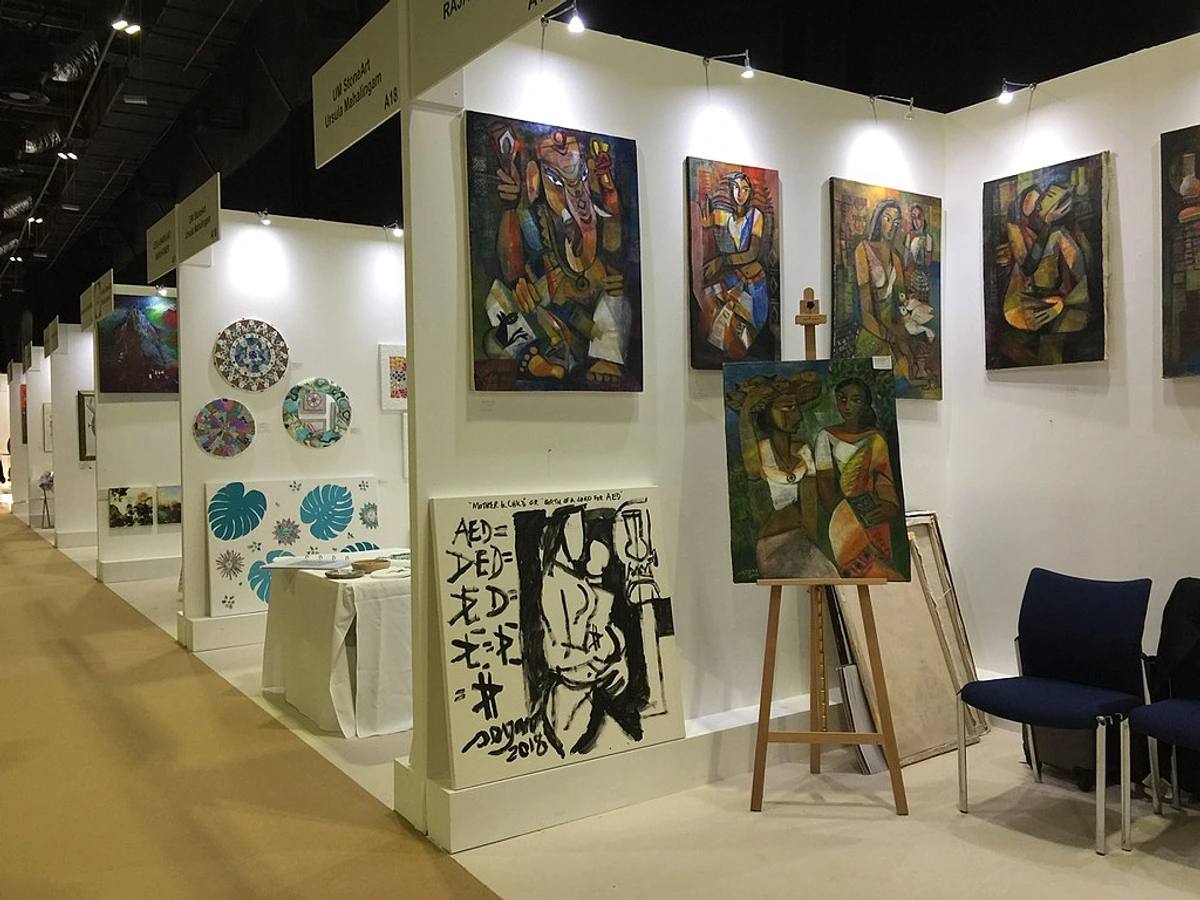
- Follow Museums: Major contemporary art museums constantly showcase important artists. Even local museums or dedicated spaces, like my own studio-museum focusing on contemporary painting, offer unique insights. Exploring these smaller, more personal spaces can be incredibly rewarding because you often get a more direct connection to the artist's process and vision, away from the sometimes overwhelming scale of major institutions. Don't forget university galleries too – they can be hidden gems! (University Art Galleries: Your Guide to Hidden Art Gems)
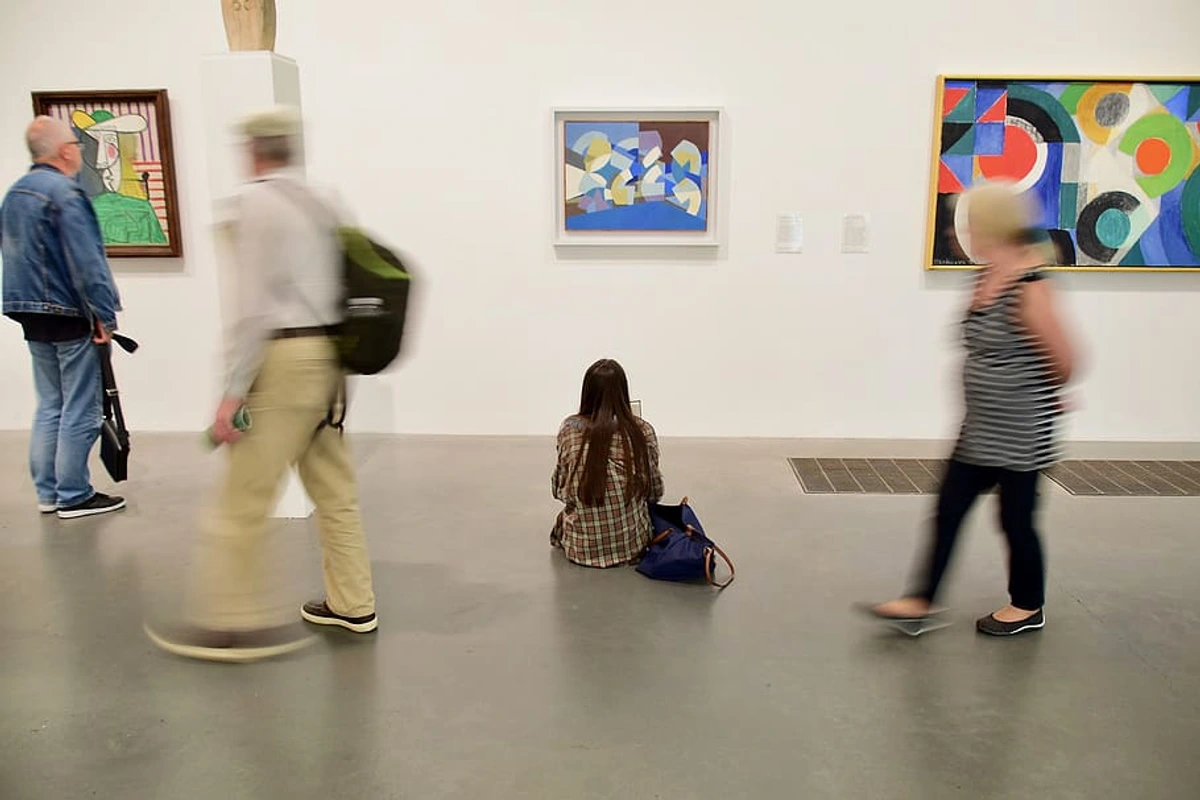
- Browse Online: Platforms like Artsy, Artnet, and gallery websites allow exploration from home. (Guide to Buying Art Online). It's a great way to dip your toes in without leaving the sofa. You can see so much art from around the world in your pajamas! You can even find contemporary art for sale directly from artists or online platforms. My personal tip for online browsing? Don't just look at the big names; use the filters to explore different mediums, price points, and even locations – you might stumble upon your new favourite artist working halfway across the world.
- Read Art Publications & Follow News: Magazines like Artforum, Frieze, and online resources keep you updated. They can help you understand the context and conversations around the art. Following major museum websites and art news sites online is also a fantastic way to keep up with current exhibitions and trends from your desk. I find reading interviews with artists particularly insightful; it's like getting a peek inside their head and understanding why they make what they make.
- Attend Biennials and Triennials: These major international exhibitions, like the Venice Biennale or Documenta, are crucial platforms for artists gaining global recognition and offer a snapshot of cutting-edge contemporary art from around the world. They are often massive and require serious stamina, but they are unparalleled for seeing what's happening now on a global scale. My advice? Pick a few pavilions or sections that genuinely interest you rather than trying to see absolutely everything – it's less exhausting and more rewarding.
- Look in Unexpected Places: Art isn't just in galleries and museums. Keep an eye out in cafes, boutiques, public spaces, and even online platforms dedicated to street art or digital art. (Finding Art in Unexpected Places: Cafes, Boutiques & Beyond). You never know where you might find something that speaks to you. The world is a canvas, if you look closely enough.
- Attend Artist Talks, Panels, and Open Studios: This is where the real connection happens! Hearing artists discuss their work, process, and inspirations in person (or via livestream) can be incredibly illuminating. Open studio events offer a chance to see where the magic happens and often chat directly with the artist. It's like getting a backstage pass to the creative process.
- Explore Art Books, Documentaries, and Deeper Online Resources: Beyond news articles, dive into monographs, exhibition catalogs, documentaries, and dedicated online archives or academic resources. These provide richer context, historical perspective, and in-depth analysis that can deepen your understanding and appreciation of contemporary artists and movements. Artist websites and online portfolios are also invaluable for seeing a wider range of their work.
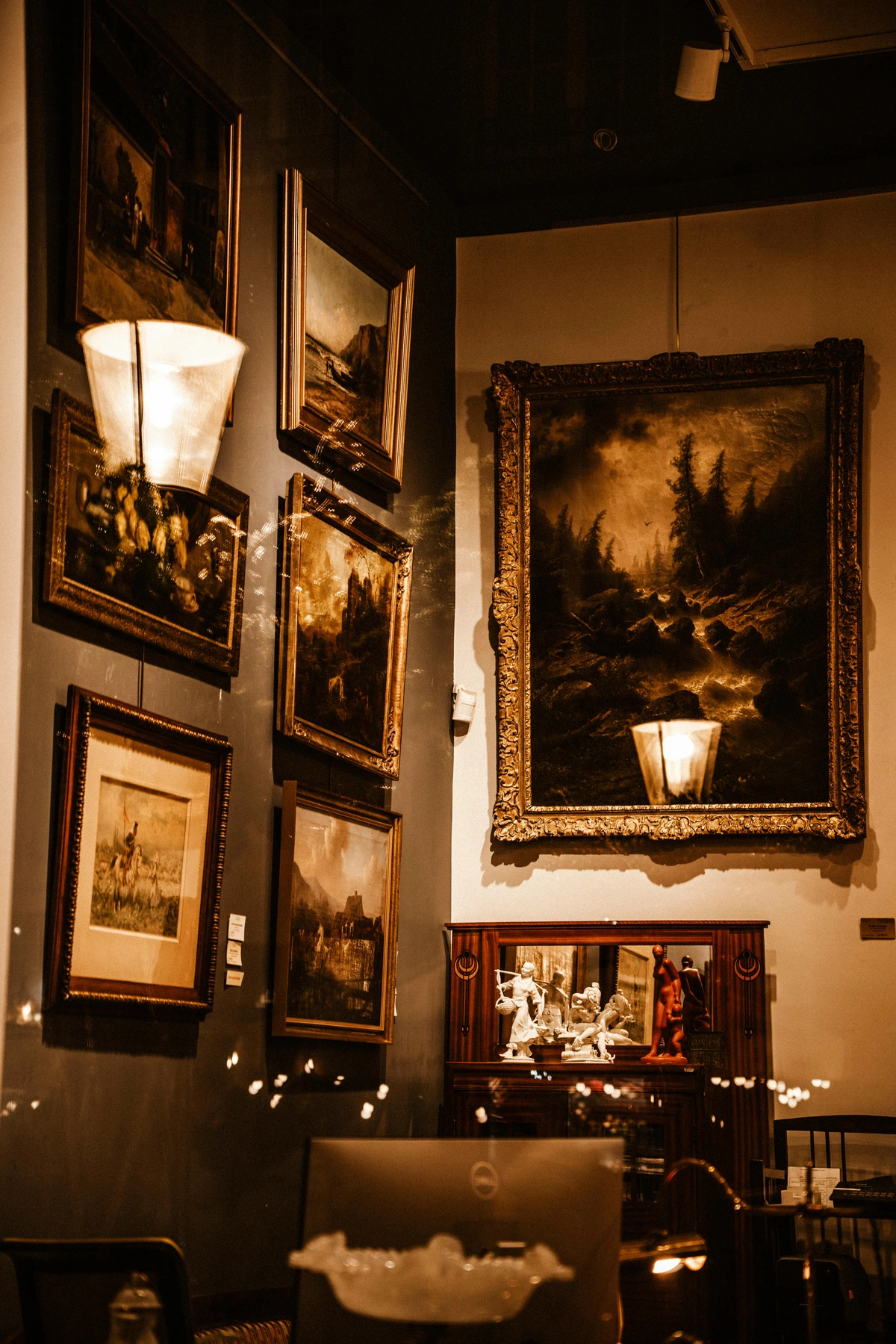
FAQ: Famous Visual Artists Today
Q: Who is considered the most famous living artist today? A: This is highly debatable and depends on your criteria (market value, influence, public recognition). Names like David Hockney, Yayoi Kusama, Gerhard Richter, Jeff Koons, Ai Weiwei, and Banksy are frequently cited as among the most famous globally. It's less about a single "most famous" and more about a constellation of artists at the top of the global conversation. It's like asking who the most famous musician is – depends who you ask and what genre they listen to! The art world loves a good debate, and this is one of the classics.
Q: Is Modern Art the same as Contemporary Art? A: No. Modern Art generally refers to art from the late 19th century up to around the 1970s. Contemporary Art refers to art being made now or in the recent past, roughly from the 1970s onwards. We have guides covering Modern Artists and the broader History of Art if you want to explore the differences. Think of Modern Art as the parents and Contemporary Art as the kids – related, but definitely not the same! Contemporary art is still figuring itself out, which is part of the fun.
Q: What's the difference between Contemporary Art and Postmodern Art? A: This is a bit tricky because the timelines overlap! Postmodern Art (roughly 1970s-1990s) is often seen as a reaction against Modernism, questioning grand narratives, embracing irony, appropriation, and diverse media. Contemporary Art is the broader term for art being made today. Much of early Contemporary Art was Postmodern, and many Postmodern ideas (like questioning authority, using diverse media) continue in Contemporary Art. But Contemporary Art is more diverse and doesn't have a single defining style or philosophy like Postmodernism did. Think of Postmodernism as a significant phase within the larger era of Contemporary Art.
Q: Why are some contemporary artists so expensive? A: A combination of factors determines art prices: artist's reputation, demand from collectors, rarity, provenance (the history of ownership, which proves authenticity and tracks value), materials, scale, and gallery representation. Fame plays a huge role – the artists mentioned here command top prices. Galleries and dealers also play a significant role in building an artist's career and market value through promotion, exhibitions, and connecting with collectors and institutions. Sometimes it feels a bit mad, doesn't it? Like, how can a shark in formaldehyde be worth that much? But the market is a complex ecosystem, driven by more than just aesthetics.
Q: Can I collect art by famous contemporary artists? A: Original works by the most famous artists are typically very expensive, often running into millions. However, many produce limited edition prints or smaller works that might be more accessible, though still a significant investment. Exploring emerging artists or established artists who aren't yet household names can be a more feasible way to start an art collection. You can find a range of contemporary art for sale online, including my own work. It's about finding what you love and what fits your budget, not just chasing the biggest names. The thrill of discovering an artist early is unmatched!
Q: How do artists become famous today? A: It's a complex mix of talent, originality, hard work, networking, critical acclaim, gallery representation, museum shows, media attention, and sometimes, just being in the right place at the right time. Social media and viral moments are also increasingly important factors. There's no single formula, and a lot of incredibly talented artists never reach this level of global fame. It's a bit of a lottery, honestly, mixed with relentless dedication and a sprinkle of magic (or maybe just good marketing).
Q: What is the role of curators in an artist's fame? A: Curators are incredibly influential! They are the gatekeepers who select artists for museum exhibitions, biennials, and major institutional shows. Their choices shape public perception, critical discourse, and historical narratives. A major exhibition curated by a respected figure in a prestigious institution can significantly boost an artist's profile, critical standing, and market value. They act as interpreters, presenting the artist's work and ideas to a wider audience, often writing accompanying texts that frame the work. (Art Curator Role: Ultimate Guide to What They Really Do (From an Artist's View))
Q: Are there famous contemporary artists from regions beyond North America, Europe, and East Asia? A: Absolutely! The contemporary art world is increasingly global. While this list focused on some of the most globally recognized names often discussed in Western media and markets, there are incredibly famous and influential artists from Africa, South America, South Asia, the Middle East, and other regions. Names like El Anatsui (Ghana), Doris Salcedo (Colombia), Subodh Gupta (India), and Wangechi Mutu (Kenya/USA) are just a few examples. The challenge is that global fame can still be filtered through dominant art market centers, but the scene is definitely expanding. Exploring galleries and museums focused on specific regions or global contemporary art is a great way to discover these artists. (Contemporary Art in Spanish-Speaking Countries: A Deep Dive), (Contemporary Art in China: A Personal Look at a Dynamic Scene), (Contemporary Art in Japan: A Personal Journey Beyond the Clichés), (Spotlight on Contemporary African Diaspora Art: A Personal Journey & Guide)
Q: What's the difference between a gallery and a museum? A: This is a common question! Generally, a gallery is a commercial space that represents artists and sells their work. They are businesses. A museum, on the other hand, is typically a non-profit institution dedicated to collecting, preserving, interpreting, and exhibiting art for the public. Museums usually have permanent collections and host temporary exhibitions, but they don't sell the art they display (unless it's in a gift shop!). Think of a gallery as a shop and a museum as a public library or archive for art. (What is an Art Gallery? Your Engaging & Ultimate Guide)
Q: Is contemporary art fame permanent? A: Not always. The art world is dynamic, and while some artists build lasting legacies, others might experience intense periods of fame driven by market trends or viral moments. It's a bit like the music industry – some artists are legends, others are one-hit wonders, and many fall somewhere in between. The "catching smoke" feeling from the intro? That applies to fame itself sometimes.
Q: How do you (the author) discover new contemporary artists? A: Great question! For me, it's a mix of things. I spend a lot of time visiting local galleries and smaller artist-run spaces – that's where you often find exciting, fresh perspectives before they hit the mainstream. I also follow a lot of artists and galleries on Instagram, which is a surprisingly good way to see what's being made right now. Reading art blogs and smaller independent publications helps too. And honestly, sometimes it's just stumbling upon something unexpected in a city I'm visiting or hearing about someone through other artists. It's a bit like being a detective, always looking for clues! And making my own work keeps me connected to the pulse of what artists are thinking about today.
Q: What are some emerging trends or the future direction of contemporary art? A: Oh, if I knew that for sure, I'd be making it right now! But we can see some directions. Digital art, including NFTs and immersive virtual experiences, is definitely growing and changing how art is made and consumed. There's also a continued focus on social and political themes, addressing issues like climate change, identity, and global conflicts. Performance art and socially engaged practices are still pushing boundaries. And I think we'll see even more blurring of lines between traditional art forms, design, fashion, and technology. It's a constantly shifting landscape, which is both exciting and a little bit dizzying to keep up with!
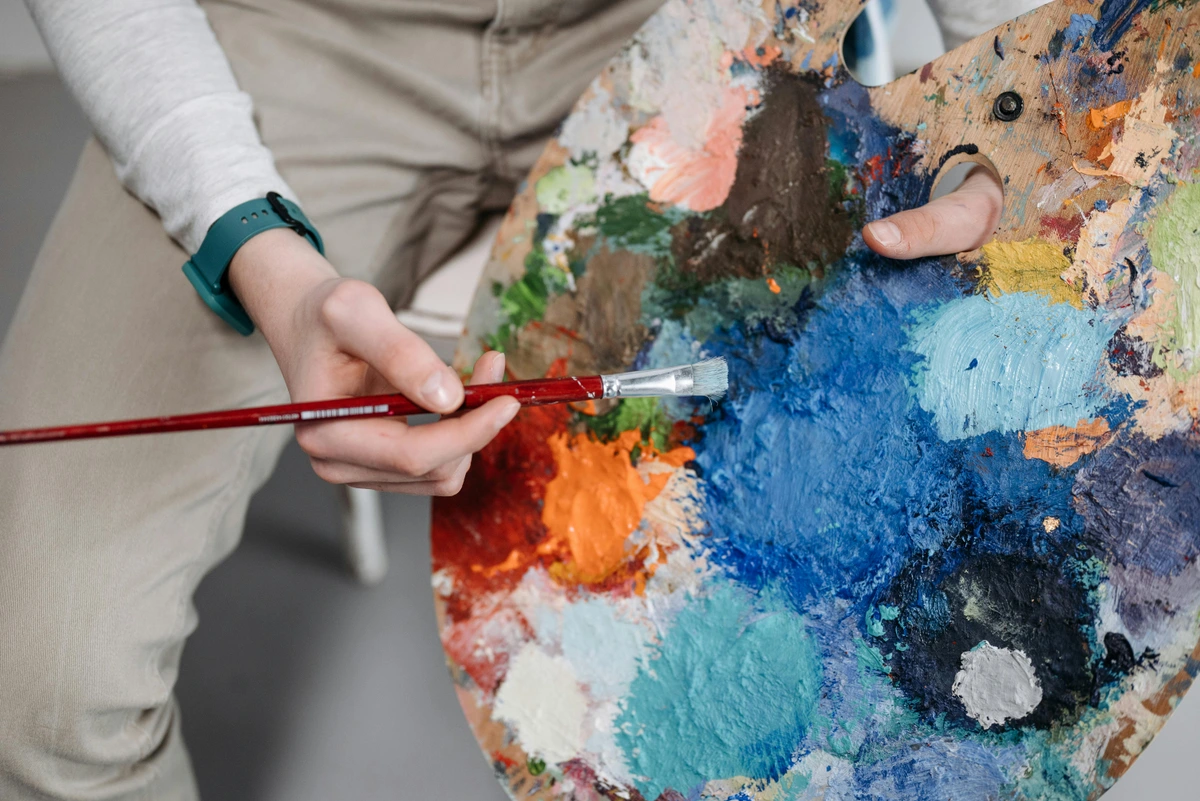
A Personal Note Before We Go...
As an artist myself, navigating this vast contemporary landscape can feel both inspiring and daunting. Seeing the scale and impact of the artists mentioned here is incredible, but it also highlights the sheer volume of work being created and the challenge of finding your own voice within it all. I remember recently struggling with a painting, feeling like everything had been done before, and then seeing a small, unexpected piece in a local show that just... clicked something for me. My own journey, documented partly in my timeline, is a constant process of looking, learning, and trying to contribute something meaningful to this ongoing conversation. It's a wild ride, full of moments of doubt and flashes of pure creative joy. It's a reminder that behind every famous name is a person in a studio, wrestling with materials and ideas, just like me.
Keep Exploring the Now
The world of contemporary visual art is dynamic and constantly evolving. The artists highlighted here are just a few of the many talents shaping our visual culture. They challenge us, delight us, provoke us, and offer new ways of seeing the world.
Don't be intimidated by the big names or the high prices. The real joy is in the discovery – finding artists whose work speaks to you. So, keep looking, keep visiting galleries and museums (World's Best Art Galleries & Museums: An Artist's Personal Guide), keep reading, and most importantly, keep thinking about the art being made today. What piece have you seen recently that made you stop and think? It’s a conversation worth joining, and your perspective is a valuable part of it.




